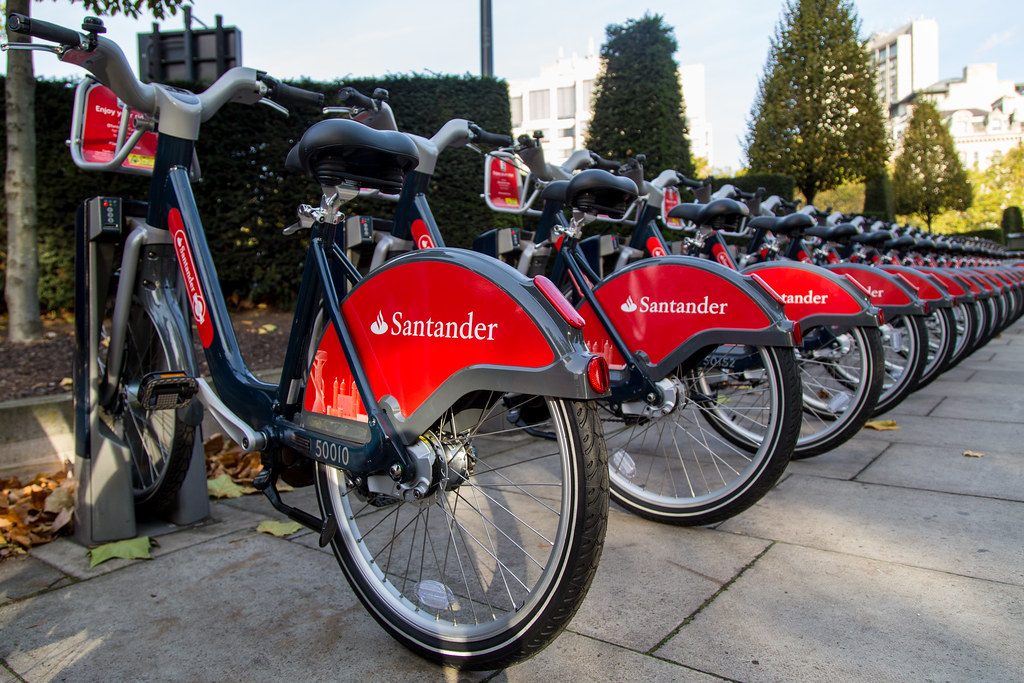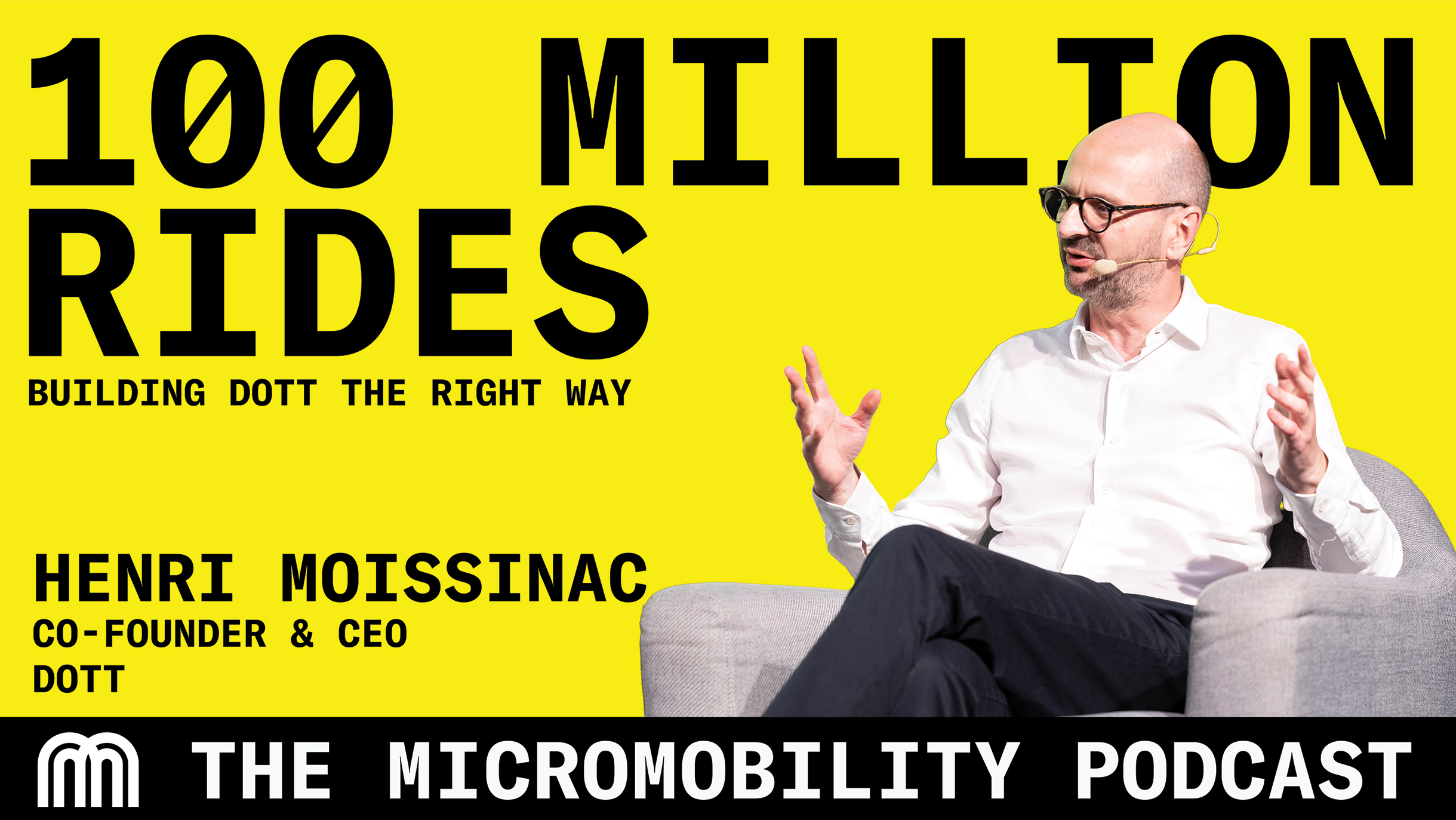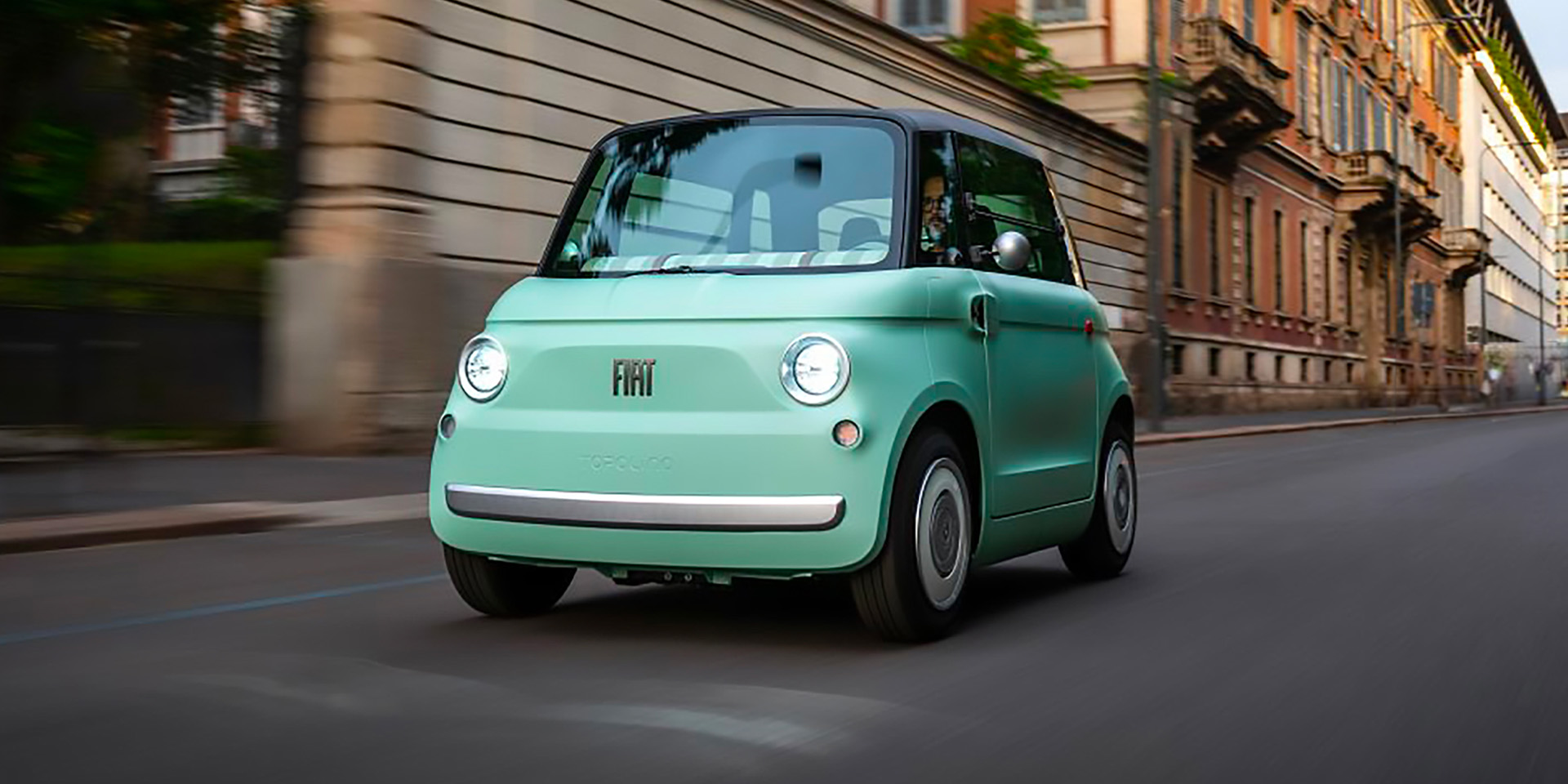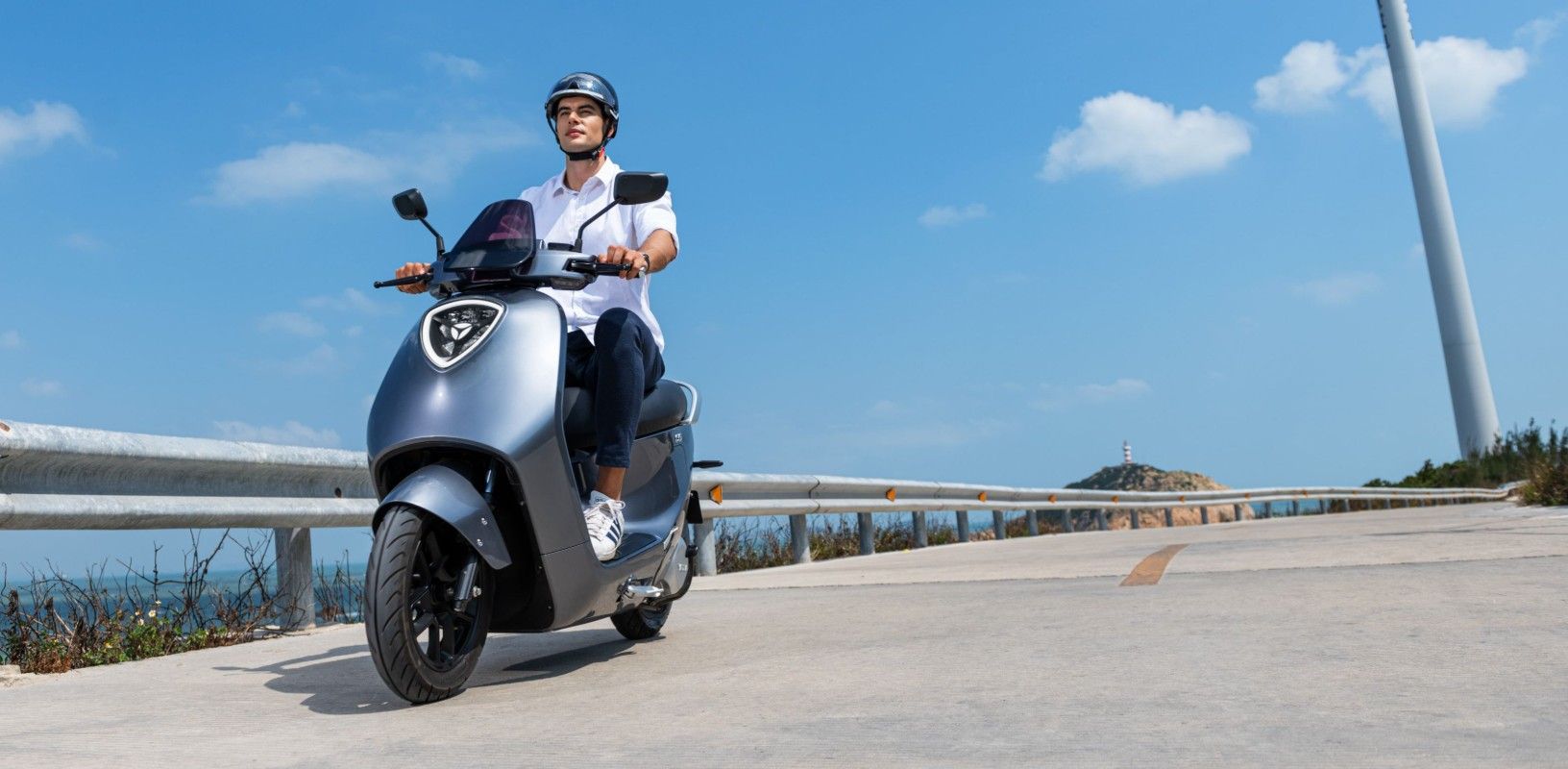How we got here…
For those who are not familiar with me or my work, my name is Horace Dediu, I am a professional analyst. I have two main areas of interest and research. Mobile computing which, as you can imagine, is the mobile phone business and associated devices like tablets and personal computers. I’ve been doing this since about 2010 when I was at Nokia. My second topic of analysis has been transportation, where I'm focused on micromobility. This is the domain of vehicles and systems and services that are targeted towards lightweight vehicles. My definition of micromobility is mobility that is enabled by a vehicle that weighs less than 500 kilograms. There are companies that are in the market already, there are companies that are considering it and there are companies that are trying to ignore it and I'm an advisor to all of them.
I began to look at a transportation several years ago. At the time I was looking at the potential entry of computing companies into that market and obviously this was an opportunity for Apple and Google as well as all the usual suspects, Samsung and so on. All these companies began with consumer electronics or computers and became makers of telecommunications equipment and are now considering entering into new markets.
One is healthcare with wearables—in the case of Apple— and, at least publicly, in the case of Google, entering into transportation with autonomous driving systems. It's important to note that these are among the largest companies in the world by market capitalization, so it's interesting that they are considering transportation.
I thought I’d take a look at what transportation is going to look like in the next few years, especially as we see software entering this domain. That research began four years ago.
It has led me to conclude that the most promising and interesting area is micromobility. The revolution in transportation will come from the bottom. These are the smallest, the cheapest, the most likely to be used vehicles. They are the shared bikes, scooters, e-bikes and potentially many more types of vehicles coming down the line.
So first, let me address the question of technology adoption by the automotive market. I would argue that the automotive industry is extremely slow in adopting technology especially what we think about as consumer technologies. It was still possible to purchase a car with a cassette player in the mid-2000s. It is still possible to buy a car with a CD player today, or one which does not have Bluetooth. It is possible to have cars which do not allow you to play or mount or attach your iPhone even though the mobile phones have been around since the mid 90s.
The car industry used to be at the forefront of technology adoption in the 1950s, 60s, 70s and 80s. You would have very clever systems in cars—from fuel injection to ABS to material sciences, advanced plastics and the use of computer technology to design crashworthiness and cars.
All of that was fairly advanced, but the the great leaps of computing that have occurred since the consumerization of microprocessors, displays, memories, and of course software, have gone at much faster speeds than the car industry can absorb.
This is because car making works on five-year development cycles for new vehicles and 15 year life-cycles for vehicles in use. So it's very possible for you to have a car that was initially designed 20 years ago to still be in use and many people have even older cars.
So this is the problem of having a global fleet of 1.2 billion cars. Even if they are new, it'll take 20 years to replace them. The software changes on a monthly cycle and the hardware that runs consumer software is changing on a yearly cycle.
These are inherently incompatible. The life cycle of the car and the life cycle of the smartphone—you can use this comparison and ask yourself how many generations of smartphones will you have before the car industry adopts some of those inventions.
I said many years ago that the car is and nothing more than an accessory to your smartphone. People are trying to work out how to make their car compatible with their smartphone: it’s the phone that's used for navigation. It's used for communication. It's used to avoid traffic. It's used to avoid boredom. It's used to entertain in the car and so on.
Drivers are ignoring everything that the car offers except its engine. Even Tesla, the subject of so much breathless reporting, is subject to the same time issues that the whole industry is facing. If they are successful in growing a little bit, they will still have to deal with this huge life cycle problem.
We need to understand how to properly segment, or in other words, what does the car solve as a problem and therefore why is it purchased and why therefore does it exist? Only if we understand those answers can we can we begin to determine the future.
One way to think about cars is that they have a utility value and that value is to transport across distances and therefore save time and shrink the world.
To categorize the value of space traversed, I look at measuring trip distances. If you think about it, the car is not appropriate for traveling 1,000 kilometers unless you have many days available. You would rather use an airplane for that.
Similarly your car is not very useful for traveling 100 meters because your feet are adequate for that. In some ways, we have to decide between 100 meters and 1000 kilometers. What is appropriate?
Historically what happened before the car is that we had the same problem—people needed to go a thousand kilometers and people needed to go a hundred meters. They would walk typically more than 100 meters and they would walk maybe a few kilometers and then beyond that the train. Of course there were horses, but they were expensive to own and thus quite rare.
So, on average, people mostly walked and then when the train became available they would take the train. Trams and other forms of shorter-distance trains ended up being used in the city. Within that environment you can imagine that the trips available to be traveled were somewhat limited, because the train didn't go everywhere and walking wasn't very fast and there really wasn't anything else.
In that environment first came the bicycle. The car didn't come first - the bicycle did. It was the bicycle that, when it became available, suddenly new trips became available and we could travel between villages. We could travel across a city that used to take all day. Now, you could do it in a matter of an hour or so. And the bicycle was the first vehicle that was personal.
The bicycle was the subject of a tremendous boom in the 1880s. It was a revolution. For transport and society in general. Many people changed their behaviors because of the bicycle. Its impact on personal freedom was profound. Susan B. Anthony stated that the bicycle, "has done more to emancipate women than any one thing in the world.” And only after the bicycle and perhaps because of the bicycle did we have the automobile. It’s obvious at first glance that the first cars were really motorized bicycles.
The technology that bicycles popularized was a miniaturizing components which became available to innovators and tinkerers who were able to use, e.g. chains and wheels and tires and spokes and all those lightweight materials. It was these parts that allowed the car to be born. Officially, the car was invented in Germany as the famous Benz patent motorwagen in 1886.
That and many later versions of the vehicle were essentially based on bicycle technology. Now, what's interesting about that story is that once the car became available it superseded almost all the other modes. But it took a while.
We now use the car for traveling 200 meters and also hundreds if not thousands of kilometers. And somehow it's considered adequate for all of those distances. But this is an inefficient way of travel because the weight of the car has gotten bigger over time and the amount of payload it carries is very very small relative to its weight. We use a 1500 kilogram car to transport a 75 kilogram person. But we really haven't had any good alternatives and, although the bicycle remained, we built infrastructures for cars to the exclusion of bicycles and we built our cities bigger.
For several decades, we have lived in an automotive environment but just when you might think we are doomed by it, we see the emergence of micromobility.
This is the interesting thing, of course: we've had bicycles for a long time. But what micromobility is is a motorized vehicle. Earlier I said micromobility is 500 kg. or less but I would amend that definition to include (a) having a motor and (b) being used for utility transport.
If you think about those three requirements (500kg, having a motor and being used for utility) it means that it can cover many segments of distance. Not just a few hundred meters. The addition of stored power means 10, 15 kilometers are possible. What’s more, that small vehicle is available at a very low price and is also available in a shared environment. That makes it very accessible as a result.
Ironically this accessibility is enabled by smartphones and GPS and cheap lithium ion batteries and cheap motors. All consumer technologies that cars have had difficulty absorbing.
Entrepreneurs are able to deploy millions and millions of these vehicles in an environment where they're just picked up and used. So what that means is that short distance trips that were provided by cars are now made available to a new mode of transport.
And this means if we look at the market for trips (or kilometers) and not vehicles, the provision of mobility solutions is at the heart of the existential question for car makers.
So how do the incumbents respond? Car makers have looked at these vehicles, and they say,
“Well, this is interesting.”
“Our engineers can certainly make a scooter or an electric bicycle.”
But the problem is that they have to sell them. Their business model is to sell vehicles and to manufacture large numbers of vehicles on expensive equipment.
When you put that very inexpensive small vehicle into a dealership, how is that dealer going to sell it? Are they going to sell it for a few hundred dollars? Even for $2000, how much margin can they make? How much service revenue can be obtained over its lifetime?
How much parts revenue can you obtain when you start to do the economics on these vehicles? It doesn't make sense to have a factory to make them as you make cars. It doesn't make sense to have a dealer network or supply chain or service network that supports that vehicle. And so when you take that proposal to your board and say, “I have an idea: let's make these things.”
The board will say no, this makes no sense. “We cannot make money doing this. It’s not a bad idea, but someone else should do it.”
And so that's the result and that will be the answer from most automakers in the world. Some will try. They will certainly do it as an experiment and they will amuse themselves doing it, but they're not going to take it to market and certainly not improve it rapidly enough.
Another problem for the incumbents is that most of these vehicles are not even sold. They're owned by an operator. And that means that you have to put it on your balance sheet. It has to be an asset that you own and depreciate. These things are contrary to the business logic of car making. So my assumption then is that most of these companies that will deploy these fleets of vehicles would be new companies that weren't making cars before. This is one way to describe a Disruption.

.svg)
%2Bcopy.jpeg)


.svg)












